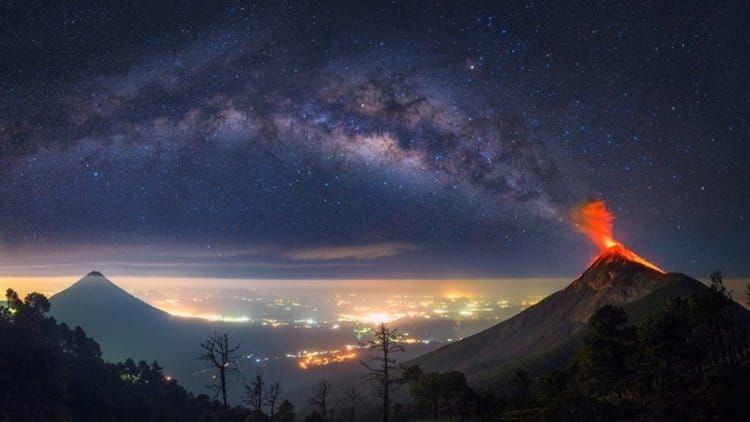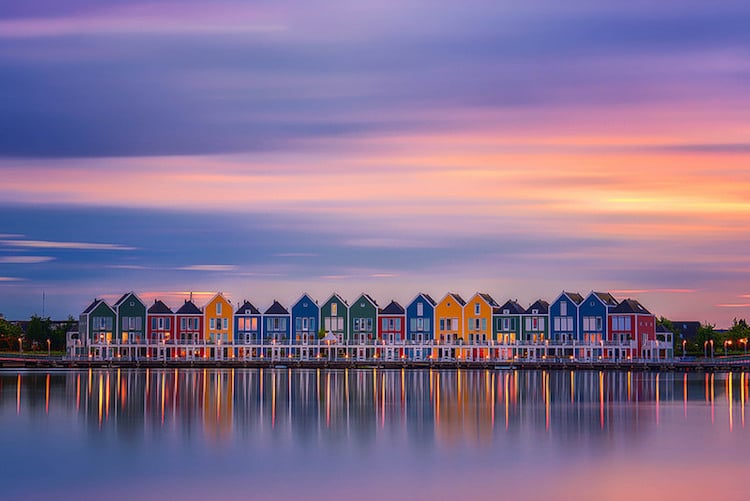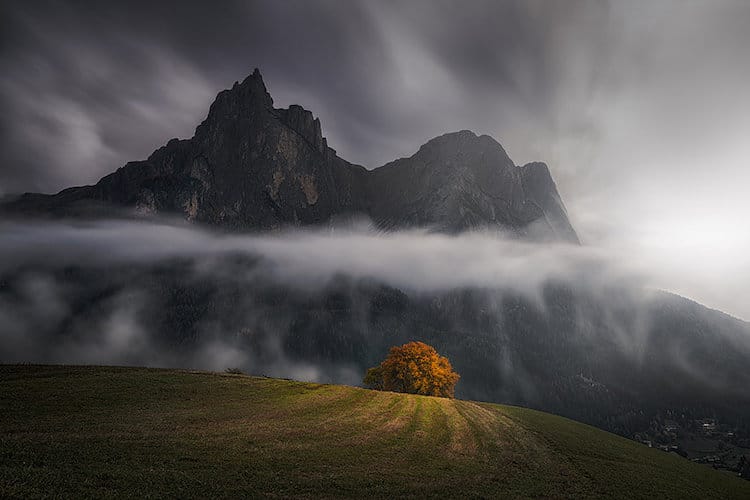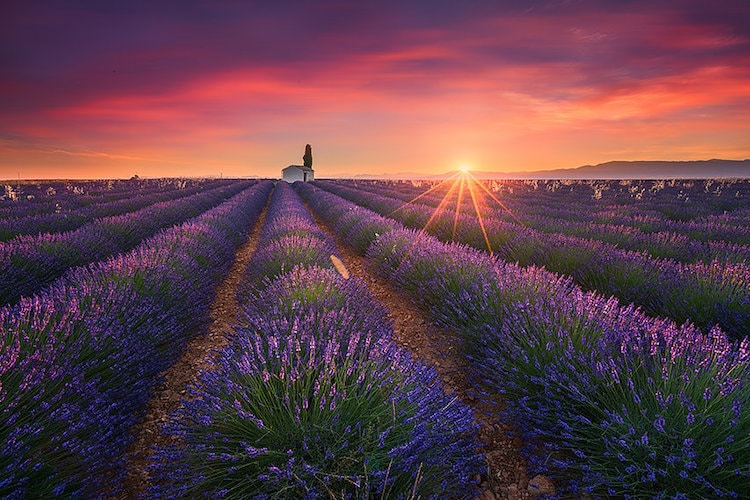
This post may contain affiliate links. If you make a purchase, My Modern Met may earn an affiliate commission. Please read our disclosure for more info.
We all wish we could receive advice on how to better our photography from experts in the field, hoping they will let us in on the secrets of their lens selection or the coordinates of their scouted location. And yet, one of the most overlooked aspects of photography is the planning stages. Professional photographer Albert Dros recently shared the secrets behind his spectacular landscape photos, and the meticulous planning that goes into each shot.
By setting himself up for success, Dros leaves as little as possible to chance, looking to get information on everything from time of sunset and sunrise to cloud cover and wind speed. With his advice, Dros has given photo enthusiasts a gift—a laid out plan that should help landscape lovers capture the scenes they are after.
Here are the tools that the Dutch photographer—whose work has appeared in TIME, National Geographic, and the Huffington Post—uses to optimize his chances for the perfect shot. And if you want specific tutorials, Dros’ blog has several articles on how he plans incredible nature scenes, including how he captured an erupting volcano with the Milky Way.

Weather App for Smartphone
There’s nothing more important than weather when planning the perfect landscape photo. WeatherPro is Dros’ go-to app, with the free version updating the weather predictions every 3 hours, while the paid version will update every hour. As it costs just $1.99, it’s a small investment to have updated, accurate information at your fingertips.
So what should you be looking for with the app? Dros helpfully breaks things down into different sections, each important for different reasons depending on the shot you’re after. Here’s what he shares about each specific weather condition.
Cloud Cover – If you want an epic burning sunset you will need clouds. Best is to have a kind of thick cloud layer with a big opening on the horizon where the sun will come underneath to cast its light on the clouds during sunset.
Fog and Mist – The app often predicts fog and mist (happens mostly in mornings). Also look for high humidity.
Wind Speed and Wind Direction – If I want to shoot at a lake or canals—in the Netherlands we have a lot of canals—I want to see some reflections. It’s important for me to have a wind speed of lower than 20 km/h (about 12.5 mph) to get decent reflections with a long exposure shot. Wind direction is also important for long exposure shots, as the wind coming towards or from behind gives a vortex effect in your shot, while the wind from the side gives you a completely different effect, as your clouds will move sideways in your shot.

An example of “the vortex effect.”

An example of the sideways effect.
Cloud/Rain/Fog Radars
Depending on your country, incredibly detailed weather radars may be available. For Dros, fog/visibility radars are especially useful. “When I am going to shoot a sunrise and fog is predicted, I want to be sure that there is actually fog when I wake up—so that I didn’t get up at 4 AM for nothing.”
The Netherlands, as well as many countries around the world, has a visibility radar where it’s possible to see live visibility in every area of the country. If the visibility is low—3 km (1.86 miles)—then it’s time to pack your bags and head out the door.

PhotoPills
For all your other needs, PhotoPills should do the trick. The app, which costs $9.99, allows you to plan the position of the sun, moon, Milky Way, stars, star trails, moon phases, sunset and sunrise times, and much more. But it’s the augmented reality feature that Dros relies on the most.
“With this, you can hold your smartphone in front of you, use the camera of the phone and see all kinds of info in real time. This way you can plan a sunset/sunrise or moonset/moonrise at a certain scene by holding your camera and checking what date/time the sun or the moon will be at an exact location.”
You can plan Milky Way shots with the app by going to a given location and seeing how the stars align at different times of the night, taking the guesswork out of your photography. The PhotoPills website also provides quite a bit of information, as well as helpful articles to enhance your photography knowledge.
Here are some of the app functions to keep an eye on.
- See the exact daily times of sunset, sunrise, blue hour, twilight, etc
- See the exact locations and elevations from the sun/moon/Milky Way
- Moon calendar for moon phases. For instance, a new moon is important for Milky Way shots
- Augmented reality function to see things in real time
- Star trails calculator for different exposure times
If you don’t want to spring for the app, suncalc.org and mooncalc.org are free options that will allow you to check the position of the sun and the moon on a given date.

Webcams
Often people don’t realize that there are numerous free webcams that allow you to see weather conditions on location without stepping foot out the door. Even traffic cameras can be useful. “You’ll be amazed how many places actually have webcams. Just type ‘PLACE + webcam’ in google!”
Common Sense
There’s no replacement for common sense and experience. Dros rightly points out that one you start doing landscape photography, you’ll get to know the weather patterns—at least in your own country—after awhile. For instance, great colorful sunsets usually appear when there are lots of clouds in the sky with a big opening at the horizon right before sunset.
Another thing people often take for granted is how simple it is to make a phone call, especially if you are planning photographs of a certain building. “I often hear people wanting to take that iconic shot of a beautiful church or cathedral, only to find out that the whole thing was under construction when they arrived there. It only takes a phone call to quickly ask!”
And while Dros is quick to remind us that everyone has their own preferences for how they manage their workflow, his expert tips certainly remind us that good planning is essential, especially when working in the elements. And while sometimes it’s possible to get lucky with wonderful conditions, more often than not, those epic landscape photos you see are the result of experience and organization.

Through careful planning, Dros was able to capture this image of a perfectly aligned moonrise.
Albert Dros: Website | Facebook | Instagram
My Modern Met granted permission to use photos by Albert Dros.
Related Articles:
Photographer Accidentally Captures Rare Sight of the ISS in a Stunning Milky Way Image
11 Very Different Types of Photography That Each Illuminate Our World
12 Photography Projects to Stretch Your Skills, One Month at a Time
Best Free and Affordable Online Photoshop Tutorials for Photographers
Free Photography Tutorial Explores the Magic of Polarizing Lens Filters
